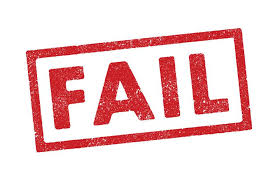Build, Transfer, or Protect
 Research indicates that most business owners have 60-80% of their wealth tied up in their businesses. Yet in our experience few owners have a clear idea about the value of their business and few have done much thinking or strategizing about how to build, transfer, or protect years of hard-earned wealth. Let’s examine these options.
Research indicates that most business owners have 60-80% of their wealth tied up in their businesses. Yet in our experience few owners have a clear idea about the value of their business and few have done much thinking or strategizing about how to build, transfer, or protect years of hard-earned wealth. Let’s examine these options.
Build means to invest for growth.
This involves time and money. As you near retirement, it may be less prudent to invest in the business and time to think about diversifying assets to lessen your overall risk. Personal considerations are often in play so they must also be assessed. This transition period requires a shift in mindset. Owners often have a hard time distinguishing between accumulation (growth) and distribution (preservation) years. Failure to recognize this transition can leave you exposed to untimely risks that have real consequences for your lifestyle and how long your money may last.
Transfer options depend on several factors — some within your control, some not.
A few considerations include the marketability of the business; the current market for privately held businesses; is there a key employee(s) or family member(s) with the skills, motivation, and capital to be successors? A third party buyer, if an option, may allow for a larger payout with more cash down in the deal structure, or perhaps a full payout. Each of these options involve different risk, return, and timing. Getting your tax and legal advisers involved early is always advised so more proceeds remain in your pocket.
Protect means preserving what you have built so that it can fund your lifestyle or next venture.
The question is will it be enough? De-risking may involve altering the business model or operations. Examining the various contingent risks that could destroy years of wealth accumulation is something every owner needs to be aware of. The potential for high liability, low probability events needs to be examined.
These strategies aren’t mutually exclusive. They require deliberate thought and a process to ensure that you strike the right balance so you can meet your goals without undue risk. We can help you quantify the tradeoffs and design an effective long-term strategy consistent with your goals.
To confidentially discuss your business valuation needs or exit strategy, please contact one of Exit Strategies’ senior advisors.

 Companies that make multiple acquisitions are much more likely to have successful merger and acquisition (M&A) transactions than companies that have made one or less acquisitions in the past five years, according to a recent Boston Consulting Group (BCG) article. In fact, over 50 percent of all M&A transactions result in negative shareholder returns.
Companies that make multiple acquisitions are much more likely to have successful merger and acquisition (M&A) transactions than companies that have made one or less acquisitions in the past five years, according to a recent Boston Consulting Group (BCG) article. In fact, over 50 percent of all M&A transactions result in negative shareholder returns. A critical component in any business transaction, whether it be a simple sale of a used car or a complex transfer of ownership of a business, is usually PRICE. The art of “the deal” is dependent upon the two parties arriving at a price they can both live with. In both cases, each party must persuasively defend their price.
A critical component in any business transaction, whether it be a simple sale of a used car or a complex transfer of ownership of a business, is usually PRICE. The art of “the deal” is dependent upon the two parties arriving at a price they can both live with. In both cases, each party must persuasively defend their price. The Wall Street Journal published an article this month titled “The Missing Boom in Small-Business Sales — An expected rush in sales of small firms by the baby boomer generation has yet to materialize.”
The Wall Street Journal published an article this month titled “The Missing Boom in Small-Business Sales — An expected rush in sales of small firms by the baby boomer generation has yet to materialize.”


